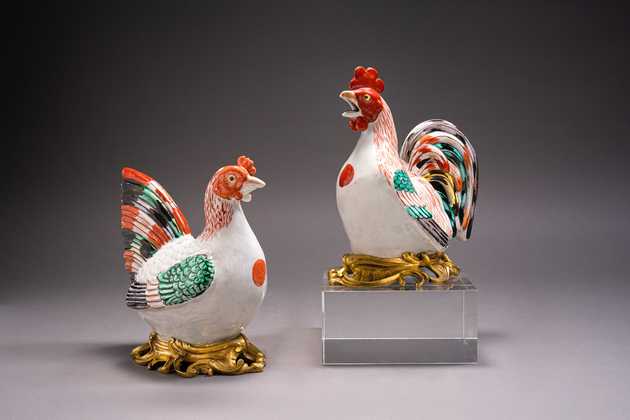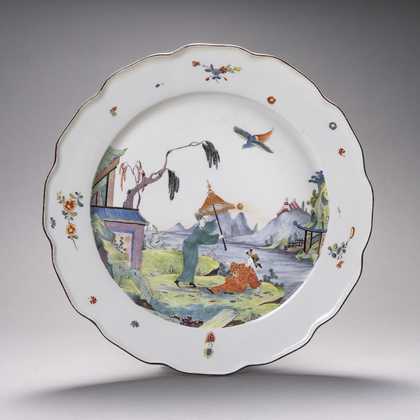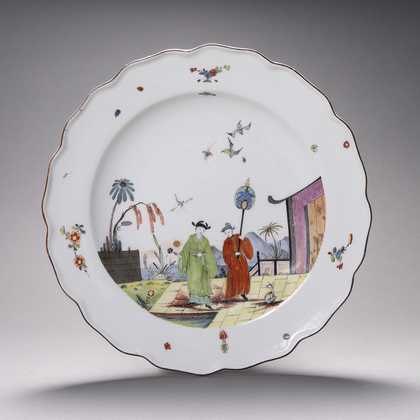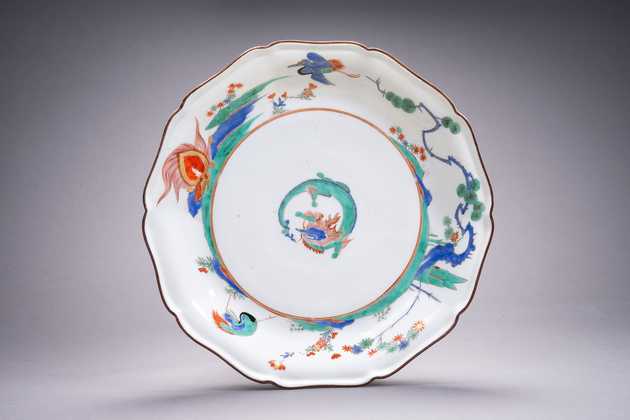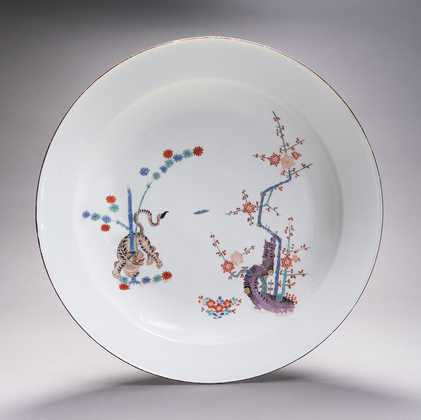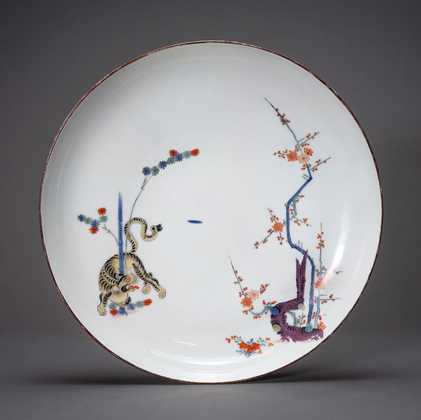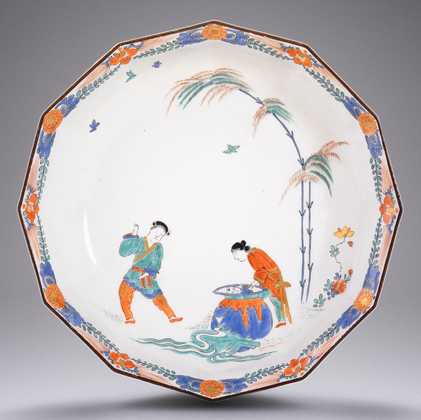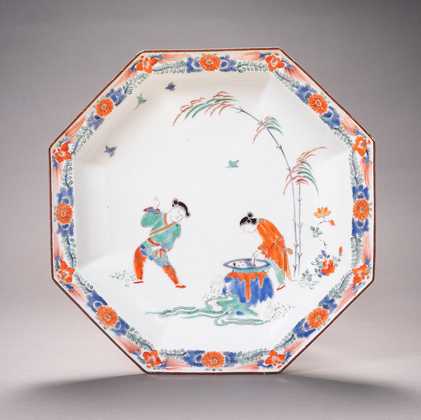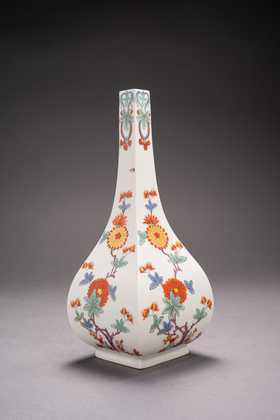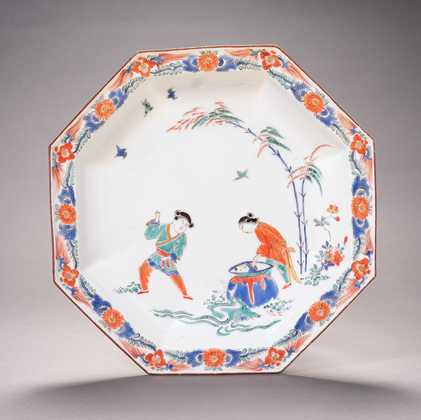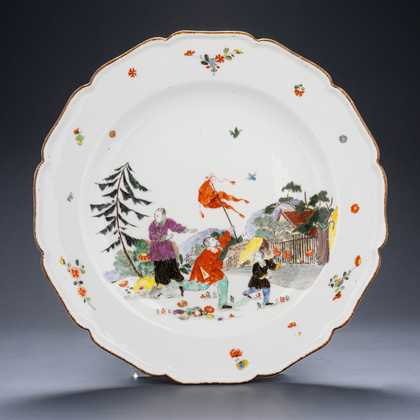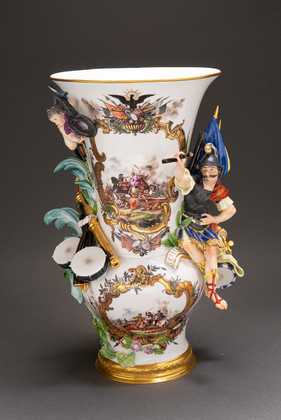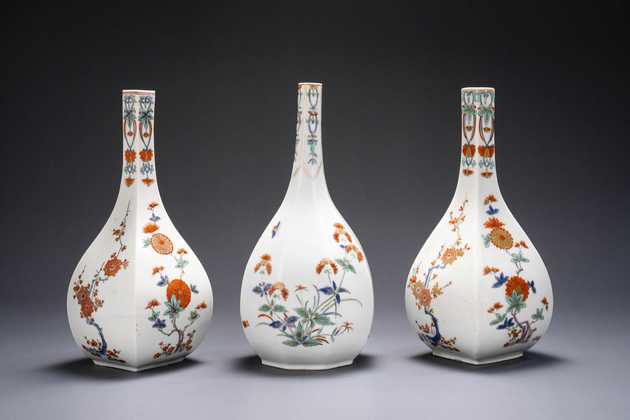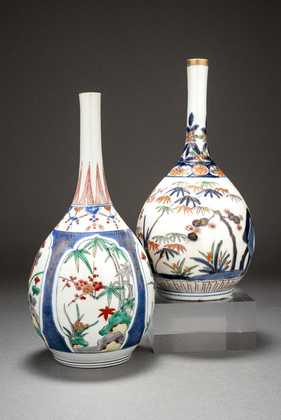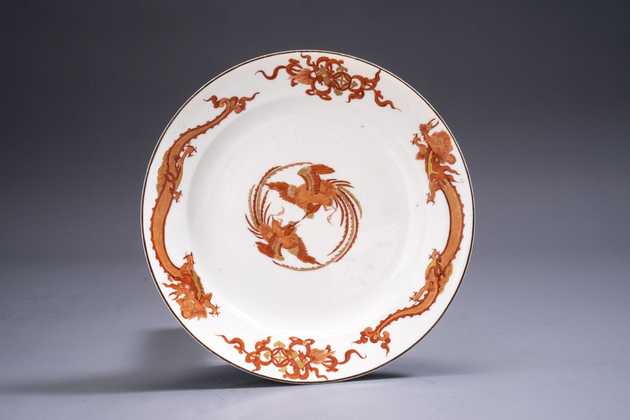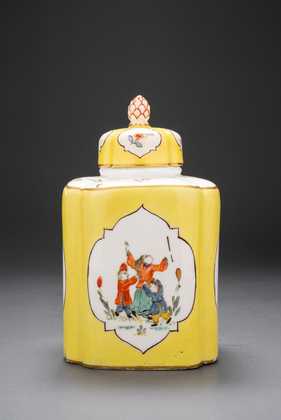



Augustus Rex bottle vase
Probably painted by Adam F. von Löwenfinck with brilliant ‘Indian’ flowers
Meissen 1732 – 1735
Height: 22,6 cm
AR monogram in underglaze blue
Impressed Dreher’s mark: 4 triangles in a circular arrangement (same as at the bottle vase from the Hoffmeister Collection)
Description
The bottle vases were exclusively for August the Strong or his son August III. They were used either for decoration in the ‘Turmzimmer’ or in the Japanese palace or as royal gifts.
The type of this vase is characterized by a rich, magnificent ‘Indian’ flower painting in brilliant colors. The motif occurs in three different variations: (1.) with one bird sitting on a branch (as on our vase), (2.) with a pair of birds (Hoffmeister I no. 138) or (3.) just flowers without birds (Arnhold no. 17a).
When dating two key points help:
- The vases were not part of the so called Hoym- / Lemaire-affair (uncovered in 1731). We did not find any examples with an enamel swords mark or ‘Caduceus’ mark.
- All comparative vases have a Dreher’s mark (as far as they are mentioned in the catalogues). These marks were used in Meissen from 1732 (Rückert 1996 p. 85 and Miedtank) to September 1739 (when they were replaced by the numbers).
The literature mainly dates them between 1730 and 1735. But regarding to Rückert and Miedtank we have to narrow the period from 1732 to 1735. In 1736, Adam Friedrich von Löwenfinck (who comes into question as painter of the vases) fled to Bayreuth.
Please contact us for the complete expertise.
Literature
Cassidy-Geiger, Maureen: The Arnhold Collection of Meissen Porcelain 1710-50. London 2008
Hoffmeister, Dieter: Meissener Porzellan des 18. Jahrhunderts. Sammlung Hoffmeister. Hamburg 1999
Rückert, Rainer: Alchimistische Symbolzeichen als Meissener Masse-, Former-, Bossierer- und Drehermarken im vierten Jahrzehnt des 18. Jahrhunderts. In Keramos 151/1996
Picture-gallery











